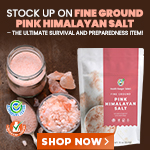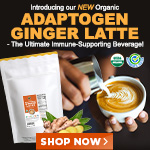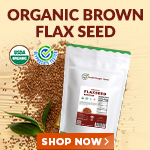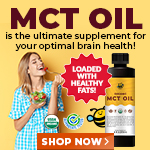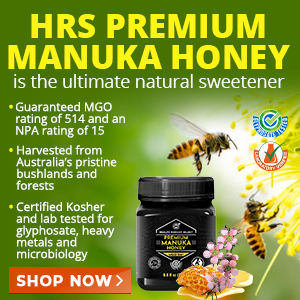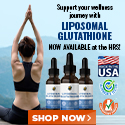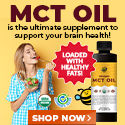POISON PRESCRIPTION: Warfarin rat poison widely used as prescription blood thinner
Monday, April 04, 2016 by: S. Johnson
Tags: Warfarin, rat poison, natural alternatives
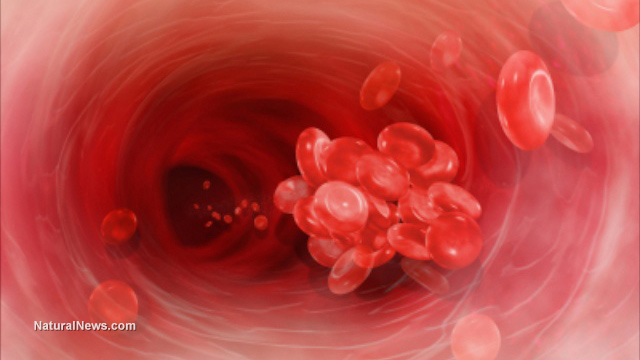
(NaturalNews) Many drugs pushed out by Big Pharma are equivalent to rat poison, but only a handful can actually claim to be rat poison. Meet warfarin: a widely used blood thinner which, prior to being used to treat a common heart rhythm disorder called atrial fibrillation, was used as rat poison.
Atrial fibrillation is an abnormal heartbeat that affects 2.2 million Americans. It occurs when the upper chambers of the heart do not dance to the beat of the lower chambers. This irregular and sometimes rapid heartbeat can cause poor blood flow, thereby increasing the risk of stroke.
Warfarin is derived from a coumarin anticoagulant (blood-clotting) chemical present in sweet clover and other plants. In the early 1920s, veterinarians noted that cows were experiencing bleeding problems during certain times of the year. This was eventually linked to the sweet clover hay that the cows were consuming, earning the name "sweet clover disease."
Getting to the heart of the problem
The compound responsible for bleeding – dicumerol – was discovered in 1934. In the early 1940s, it started to be tested in people as a blood thinner. In 1945, a stronger version of dicumerol was patented and named after the Wisconsin Alumni Research Foundation (WARF).Around that same time, a close cousin of warfarin, named coumafuryl, was marketed as a rat poison under the brand names Rat-A-Way and Lurat. Coumafuryl was considered an effective rat poison for its odorless and tasteless quality, making it easier to feed to rats.
Warfarin was originally too strong to be given to people. However, it was prescribed for medical use in 1954, and increased in popularity in the early 1990s for slashing the risk of annual strokes by two-thirds, from 4.2 percent to 1.4 percent.
Patients prescribed warfarin for atrial fibrillation will likely be dependent on the rat poison for the rest of their lives. Although warfarin is widely prescribed, particularly to the elderly, few patients are aware that they are literally ingesting rat poison. Warfarin is now one of the most widely used oral anticoagulants in the United States.
In Australia, warfarin is only available under the brand names Coumadin and Marevan. They cannot be used interchangeably, since the tablets vary in potency and color. The recommended dose differs for each patient, from 0.5mg to 30mg a day, but the average daily dose is 4.5 mg.
Health complications attached to Warfarin
Various health complications can arise when blood becomes either too thick or too thin. To keep blood levels in check, doctors are supposed to monitor patients on warfarin with monthly blood samples and adjust their doses accordingly.Blood clots form throughout the body by launching a sequence of blood clotting factors. The body needs vitamin K to make these blood clotting factors, which can be obtained through green leafy vegetables. Warfarin mitigates the body's ability to use vitamin K to create these blood clotting factors. In other words, warfarin and vitamin K are sworn enemies.
Although warfarin isn't generally known as a rat poison, it is known for causing a host of health complications, and even death. Medical records reveal that approximately 11 percent of drug complications among hospital patients are the result of anticoagulant therapy. These adverse reactions are more likely to result in permanent disability than are other medical errors.
Rate of brain hemorrhages spikes
In fact, according to a 2007 study published in the American Academy of Neurology, the rate of brain hemorrhages associated with blood thinning drugs quintupled during the 1990s. A brain hemorrhage is a stroke triggered by bleeding in the brain. The researchers stated that the spike in brain hemorrhages was primarily due to an increase in the use of warfarin which, ironically, is supposed to reduce the risk of stroke.In particular, the researchers found that the rate of interracial hemorrhages associated with the use of blood thinners in the Cincinnati area increased from 0.8 cases per 100,000 people in 1998, to 4.4 cases per 100,000 people in 1999. For people 80 years of age and older, the rate jumped from 2.5 in 1998, to a shocking 45.9 in 1999.
"For many people, the benefits of preventing ischemic stroke continue to outweigh the risk of a hemorrhagic stroke. Our findings should not discourage the use of warfarin when it's appropriate. Doctors can use these findings to make sure they are weighing the risks and benefits of warfarin use for their patients. For researchers, these results may stimulate efforts to develop safer alternatives to warfarin and better treatments for people with brain hemorrhages," said lead author and neurologist Dr. Matthew L. Flaherty.
According to Dr. Michael B. Rothberg, a former associate professor at Tufts Medical Center, doctors should consider the risk of stroke versus the risk of bleeding when prescribing warfarin.
"This study demonstrates that we need to be careful when we use these therapies," he said. "Not all patients with atrial fibrillation should be getting warfarin. Patients at the highest risk for stroke will benefit the most, and patients at the highest risk for bleeding will benefit the least."
Natural blood thinners
The risks and benefits attached to warfarin make it a difficult medicine to gauge. In Australia, for example, warfarin use has increased to a rate of 9 percent a year for its ability to mitigate strokes. However, the risks associated with warfarin have caused many people to quit taking the medication, particularly among seniors who have the greatest risk of stroke.Fortunately, there are alternative blood thinners out there without the dangerous side effects anchored to prescription drugs. Both cayenne peppers and vitamin C, for instance, are great for the blood vessels and heart in general. Other natural blood thinners include foods rich in salivates, a natural chemical that serves as a major ingredient for pain-relieving medications. Sources of salivates include cinnamon, turmeric, peppermint, oranges, raisins, blueberries and honey.
All those who are interested in finding natural ways of dealing with serious health conditions should be sure to visit the Natural Medicine Healing & Wellness Summit.
Sources include:
NewsMax.com
IFLScience.com
Island-Reporter.com
AskDrLouise.com
AskDrLouise.com
Stroke.org
StopTheClot.org
NCBI.NLM.NIH.gov
NaturalNews.com
ScienceDaily.com
NaturalNews.com
UMM.edu
TheScienceOfEating.com
Science.NaturalNews.com
Warfarin at FETCH.news
Get independent news alerts on natural cures, food lab tests, cannabis medicine, science, robotics, drones, privacy and more.
Take Action: Support Natural News by linking to this article from your website
Permalink to this article:
Embed article link: (copy HTML code below):
Reprinting this article:
Non-commercial use OK, cite NaturalNews.com with clickable link.
Follow Natural News on Facebook, Twitter, Google Plus, and Pinterest
- Newly released JFK files reveal Pentagon's role in creating Lyme disease and covid in the same lab
- Ginseng's hidden anti-aging power: How compound K is rewriting the rules of skincare
- “Endgame: The Hidden Agenda 21” unveils a world of conspiracy and control
- L.A.'s rebuilding nightmare: Only 4 permits issued after fire destroys 6,000 homes
- Scientists demand FDA withdraw mRNA COVID vaccines amid contamination and gene therapy concerns
- Dr. Suzanne Humphries makes bombshell appearance on Joe Rogan podcast, exposing vaccine industry deception back to POLIOMYELITIS
- Former Congresswoman exposes CCP's deep infiltration of California through universities, ports, and fentanyl
- “The shame of Minnesota”: Somali immigrants behind $250 million child nutrition fraud in largest COVID-era scam
- PROCESSED TABLE SALT in foods found to fuel depression
- “Independent” anti-Russia outlet MEDUZA faces COLLAPSE as US funding dries up
- Here are TEN all-natural ways to protect your garden without using harmful chemicals
- BPA: The hidden hormone disruptor sabotaging your health - and how to fight back
- Chewing gum's dirty secret: How your daily habit could be flooding your body with microplastics
- The hidden battle in your glass: How A1 and A2 milk could shape your health
- Discovery of vast underground city beneath Giza pyramids challenges human history
- Catastrophic 7.7 earthquake devastates Myanmar and Thailand; death toll could reach 100,000
- CDC finally halts $11 billion COVID funding scam as health officials admit the ‘pandemic’ was a fraud
- Black cumin seed oil emerges as a powerful ally against breast cancer and chronic inflammation
- Newly released JFK files reveal Pentagon's role in creating Lyme disease and covid in the same lab
- Analysis: The coming economic collapse, a mass uprising and Trump's three secret weapons to halt the growing revolt
- Festive flavors: The sweet history, nutritional profile and health benefits of pecan pie
- Elon Musk: Aliens could be here on Earth RIGHT NOW
- Trump reverses course on Gaza plan, says “nobody is expelling Palestinians”
- Big Pharma's $8 Billion bribery scheme exposed: how doctors are pushed to prescribe junk science, not heal
- Boys are back in town: Trump’s patriotic alpha crew takes the wheel while toxic females ride in the backseat
- Reclaim your health: How midlife exercise reverses years of inactivity
- A lack of integrity in Academia: Harvard professor found GUILTY of fraudulent research to promote CRT theory
- Survival 101: Effective EMF blocking techniques
- EPA advisor admits the agency is funneling billions to climate groups ahead of Trump’s return to White House
- Dr. Mike Yeadon releases 15-minute testimony - WATCH - about genocidal intent of COVID “vaccines”
- 5 Simple steps to boost your brainpower: How to strengthen executive function in a distracted world
- Florida takes a stand: DeSantis proposes permanent ban on mRNA vaccine mandates
- Sugarcane extract superior to cholesterol-lowering drugs?
- Mike Adams Sermon 66: God will DESTROY ISRAEL for its wickedness
- Pilots report mysterious lights 'moving at extreme speeds' across Oregon skies
- Space war brewing? Russia threatens to destroy Starlink satellites
- EPA advisor admits the agency is funneling billions to climate groups ahead of Trump’s return to White House
- California's social media censorship law struck down: A victory for free speech or a threat to online safety?
- The Health Ranger releases “Vaccine Zombie” song and music video, using AI-animated zombies for the music video
- Dr. Mike Yeadon releases 15-minute testimony - WATCH - about genocidal intent of COVID “vaccines”
- The pandemic as a tool for INDOCTRINATION: Understanding “The Indoctrinated Brain” by Dr. Michael Nehls
- Newly released JFK files reveal Pentagon's role in creating Lyme disease and covid in the same lab
- Florida takes a stand: DeSantis proposes permanent ban on mRNA vaccine mandates
- Mike Adams releases country western hit single: Goin’ Back in Time is Comin’ Home
- Mike Adams releases music poetry sensation: A Child of God
- “Why we influenced the 2020 elections”: Facebook files reveal the coordinated effort to bury the Hunter Biden laptop story
- Unpacking the Lies That We’ve Been Fed – new song and music video released by Mike Adams, the Health Ranger
- RFK Jr. clears key hurdle: Sen. Susan Collins backs controversial HHS nominee, signaling a new era for health policy
- Mike Adams releases new song and music video: Nothing More Disgusting Than a Globalist
- Michigan sheriff announces criminal investigation into 2020 election crimes, Dominion Voting Systems
- Israeli soldiers accused of even more torture and abuse in the West Bank
- Migrants are taking advantage of recent hurricanes to scam residents and loot their homes
- House Intelligence Committee calls for the ARREST and PROSECUTION of Dr. Anthony Fauci
- Rep. Nancy Mace introduces bill to ban biological males from female facilities on federal property
- Red Cross issues warning to stop blood plasma donations from vaccinated people
- Scientists confirm: GENIUS brain function can be spontaneously unleashed in humans without any apparent cause
- EPA advisor admits the agency is funneling billions to climate groups ahead of Trump’s return to White House
- HYSSOP: What research reveals about the health benefits of this ancient holy herb
- Two containers with completed ballots fall out of truck in Florida
- Fully vaccinated about to see “tsunami” of illness and death, warns virologist
- Global leaders unite to clamp down on “misinformation” with UN-backed Cascais Declaration
- BREAKING: 2025 NDAA authorizes mandatory military draft of WOMEN across America… as Pentagon pursues global NUCLEAR war with both Russia and China at the same time
- Michael Yon warns of a ZIONIST TAKEOVER in Trump’s second administration
- BOMBSHELL: DNA testing kits are a SCAM to develop ethnic-specific bioweapons
- Ozempic and Wegovy weight loss drugs are injectable LIZARD VENOM PEPTIDES that may unleash a devastating wave of organ failure… side effects align with symptoms of SNAKE BITES
- Israeli soldiers accused of even more torture and abuse in the West Bank
- These 13 countries just signed an agreement to engineer a global FAMINE by destroying food supply
- NASA admits that climate change occurs because of changes in Earth’s solar orbit, and NOT because of SUVs and fossil fuels
- RFK Jr. clears key hurdle: Sen. Susan Collins backs controversial HHS nominee, signaling a new era for health policy
- Sermon 30: How Jesus reveals Caesar’s FAKE CURRENCY and FALSE AUTHORITY
- Coriander seeds: Ancient medicine backed by modern science
- Arizona officials claim Maricopa County needs 10-13 days to tabulate results of the election
Science News & Studies
Medicine News and Information
Food News & Studies
Health News & Studies
Herbs News & Information
Pollution News & Studies
Cancer News & Studies
Climate News & Studies
Survival News & Information
Gear News & Information
News covering technology, stocks, hackers, and more



"Big Tech and mainstream media are constantly trying to silence the independent voices that dare to bring you the truth about toxic food ingredients, dangerous medications and the failed, fraudulent science of the profit-driven medical establishment.
Email is one of the best ways to make sure you stay informed, without the censorship of the tech giants (Google, Apple, Facebook, Twitter, YouTube, etc.). Stay informed and you'll even likely learn information that may help save your own life."
–The Health Ranger, Mike Adams













